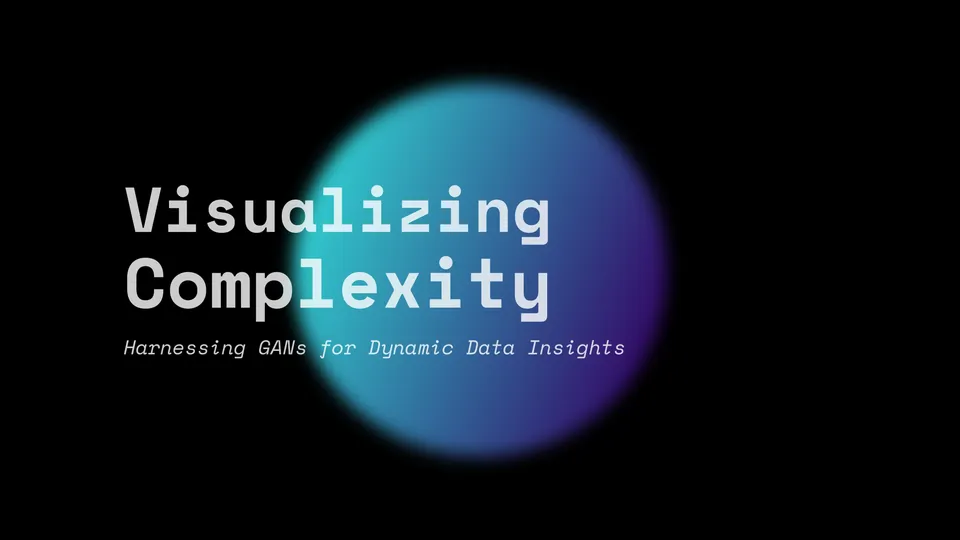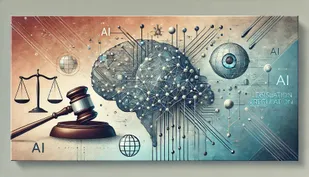
🤖 Generative Adversarial Networks (GANs) for Dynamic Data Visualization
Generative Adversarial Networks (GANs) have revolutionized various fields, from image synthesis to drug discovery. However, one of the lesser-explored yet equally exciting applications of GANs is in dynamic data visualization. This blog will delve into how GANs can be leveraged to create interactive and dynamic visualizations, enhancing the way we interpret and engage with data. We’ll also provide some complex code snippets to illustrate the process.
🧠 Introduction to GANs
GANs, introduced by Ian Goodfellow in 2014, consist of two neural networks: the Generator and the Discriminator. The Generator creates data samples, while the Discriminator evaluates them. They are trained simultaneously in a zero-sum game where the Generator aims to produce realistic data, and the Discriminator strives to distinguish between real and generated data.
📊 Dynamic Data Visualization
Dynamic data visualization involves creating interactive and responsive visual representations of data that can change over time or in response to user inputs. Traditional static visualizations often fall short in conveying complex, multidimensional data insights. This is where GANs come into play, providing a mechanism to generate and refine visual data in real-time.
🏗️ Advanced GAN Architecture for Data Visualization
For dynamic data visualization, we can design a GAN where the Generator produces visual representations of data, and the Discriminator ensures these representations are meaningful and accurate. We’ll implement a more sophisticated GAN with a conditional setup, allowing us to generate visualizations based on specific conditions or inputs.
💻 Code Snippets
Below are advanced code snippets to illustrate the process of setting up a conditional GAN (cGAN) for dynamic data visualization using TensorFlow and Python.
📂 1. Data Preparation
Prepare a sample dataset. For this example, we’ll use a more complex dataset with conditions.
import numpy as np
import pandas as pd
# Generate a complex dataset with conditions
def generate_complex_data(samples):
data = []
for _ in range(samples):
x1 = np.random.uniform(-1, 1)
x2 = x1**3 + np.random.normal(0, 0.1)
label = 1 if x1 > 0 else 0
data.append([x1, x2, label])
return np.array(data)
data = generate_complex_data(5000)
df = pd.DataFrame(data, columns=['x1', 'x2', 'label'])🏋️♂️ 2. cGAN Training
Define the conditional Generator and Discriminator models and train the cGAN.
import tensorflow as tf
from tensorflow.keras import layers
# Conditional Generator model
def build_generator():
noise = layers.Input(shape=(2,))
label = layers.Input(shape=(1,))
inputs = layers.Concatenate()([noise, label])
x = layers.Dense(16, activation='relu')(inputs)
x = layers.BatchNormalization()(x)
x = layers.Dense(32, activation='relu')(x)
x = layers.BatchNormalization()(x)
output = layers.Dense(2)(x)
model = tf.keras.Model([noise, label], output)
return model
# Conditional Discriminator model
def build_discriminator():
data = layers.Input(shape=(2,))
label = layers.Input(shape=(1,))
inputs = layers.Concatenate()([data, label])
x = layers.Dense(32, activation='relu')(inputs)
x = layers.Dropout(0.3)(x)
x = layers.Dense(16, activation='relu')(x)
x = layers.Dropout(0.3)(x)
output = layers.Dense(1, activation='sigmoid')(x)
model = tf.keras.Model([data, label], output)
return model
# cGAN model
def build_cgan(generator, discriminator):
discriminator.trainable = False
noise = layers.Input(shape=(2,))
label = layers.Input(shape=(1,))
generated_data = generator([noise, label])
valid = discriminator([generated_data, label])
model = tf.keras.Model([noise, label], valid)
return model
generator = build_generator()
discriminator = build_discriminator()
cgan = build_cgan(generator, discriminator)
# Compile models
discriminator.compile(optimizer='adam', loss='binary_crossentropy', metrics=['accuracy'])
cgan.compile(optimizer='adam', loss='binary_crossentropy')🔄 3. Training Loop
Train the cGAN with the complex dataset.
def train_cgan(cgan, generator, discriminator, data, epochs, batch_size):
real = np.ones((batch_size, 1))
fake = np.zeros((batch_size, 1))
for epoch in range(epochs):
idx = np.random.randint(0, data.shape[0], batch_size)
real_data = data[idx, :2]
labels = data[idx, 2:]
noise = np.random.normal(0, 1, (batch_size, 2))
gen_data = generator.predict([noise, labels])
d_loss_real = discriminator.train_on_batch([real_data, labels], real)
d_loss_fake = discriminator.train_on_batch([gen_data, labels], fake)
d_loss = 0.5 * np.add(d_loss_real, d_loss_fake)
g_loss = cgan.train_on_batch([noise, labels], real)
if epoch % 100 == 0:
print(f"Epoch {epoch+1}/{epochs} | D Loss: {d_loss[0]:.4f}, Acc: {d_loss[1]*100:.2f}% | G Loss: {g_loss:.4f}")
# Train the cGAN
train_cgan(cgan, generator, discriminator, data, epochs=20000, batch_size=64)📈 4. Dynamic Visualization
Use the trained Generator to create dynamic visualizations based on different conditions.
import matplotlib.pyplot as plt
def visualize_dynamic_data(generator, samples=100):
labels = np.array([[1]] * (samples // 2) + [[0]] * (samples // 2))
noise = np.random.normal(0, 1, (samples, 2))
generated_data = generator.predict([noise, labels])
plt.scatter(generated_data[:samples // 2, 0], generated_data[:samples // 2, 1], color='blue', label='Label 1')
plt.scatter(generated_data[samples // 2:, 0], generated_data[samples // 2:, 1], color='red', label='Label 0')
plt.title('Dynamic Data Visualization with cGAN')
plt.legend()
plt.show()
# Visualize the generated dynamic data
visualize_dynamic_data(generator)🏁 Conclusion
Leveraging GANs for dynamic data visualization can significantly enhance our ability to interpret and interact with complex datasets. By continuously refining visual outputs based on real-time data and user interactions, GANs open up new possibilities for data analysis and presentation.
This blog has provided an advanced introduction and complex code snippets to get you started with using conditional GANs for dynamic data visualization. As you explore further, consider experimenting with more complex architectures and datasets to unlock the full potential of GANs in your data visualization projects.








